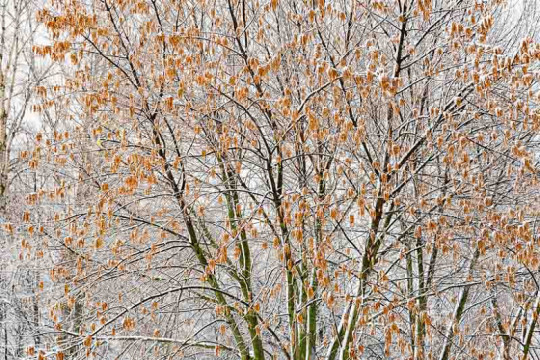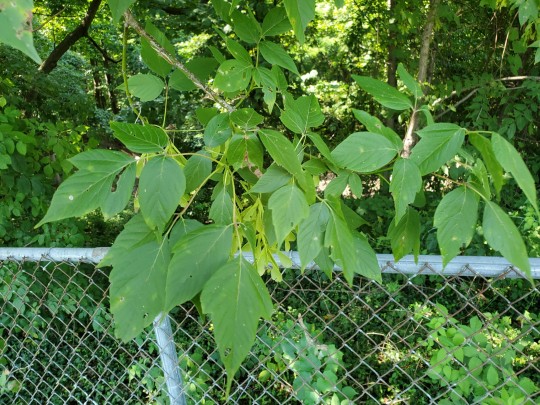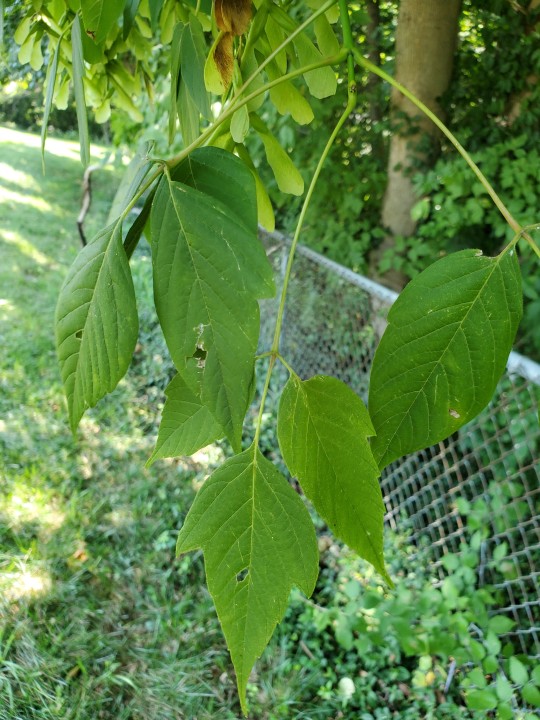#acer negundo
Text
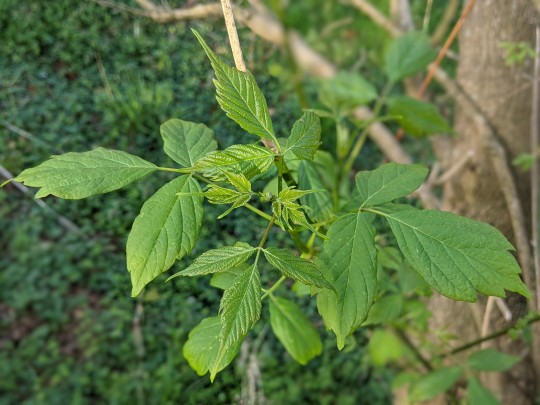
What time of year is it?
It's "omg there's poison ivy everywhere at the park!" in the plant id group/nextdoor.

It's a tree, Helen.
#box elder#afaik anyway#tbf it really does make you doubletake sometimes#i love learning & i love other people learning but sometimes#yknow the just masses of ppl who get on a subject at the same time#esp on fb groups#which are a great resource! if you do a Lot of sifting#it's exhausting#AND THAT'S WHEN YOU GO OUTSIDE. SELF#plant id#spring#acer#acer negundo#lookalikes
6 notes
·
View notes
Text
Oxbow Argentina -Planta Copetro- donó 500 árboles a la Municipalidad de Ensenada
#Sociedad #Industria | #OxbowArgentina #PlantaCopetro donó 500 árboles a la Municipalidad de #Ensenada
En el marco de colaboración con el Plan de Forestación que el municipio está desarrollando para potenciar los espacios verdes públicos y las veredas de la ciudad, la empresa donó 500 árboles de especies variadas, entre los cuales se encuentran: fresno rojo, pseudoacacia, pezuña de vaca, morera híbrida, acer negundo y acer saccharinum.En el contexto de este, se encuentra el Programa de Forestación…

View On WordPress
#acer negundo#acer saccharinum#árboles#Desarrollo Sustentable#Ensenada#Escuela Técnica N° 1#Espacios Verdes#fresno rojo#FUNDACORE#Hospital de Niños de La Plata#morera híbrida#Oxbow Argentina#Pezuña de Vaca#Plan de Forestación#Planta Copetro#pseudoacacia#residuos orgánicos#veredas
0 notes
Text

Aline Héau
Acer negundo's flowers
283 notes
·
View notes
Text
Okay who is ready for some tree ID?


There's a sprig I took from the tree and a close up of the leaves. Unfortunately the tree itself had been cut down.

Here's a shot of the plant near where I found a stick I took home.


Update: The leaves at the very top are likely from a boxelder tree (Acer negundo) which explains why it was in bad shape (they are often seen as pests that steal nutrients from other trees).
Here are some shots of the twisty trees in that row of trees I talked about earlier. The other trees in the row are definitely maples because they have very distinctive leaves and they already have keys lying around.
The twisty fellows are possibly bur(r) oaks (Quercus macrocarpa) Ontario's most common oak. You would think I would've noticed acorns before this though.
3 notes
·
View notes
Text
Box Elder
Box elder leaves are pinnately compound.
Leaves of three, leave it be, unless one can see that it is a box elder tree, Acer negundo. This is the most common of the North American maples. It is native to all American states except for only Alaska and Hawaii. Yet, it is also unique as the only maple with pinnately compound leaves. Typical leaves have three leaflets, but might have as many as…

View On WordPress
0 notes
Note
cool bug facts day 555! Dryocampa rubicunda, the rosy maple moth, is a small North American moth in the family Saturniidae, also known as the great silk moths. It was first described by Johan Christian Fabricius in 1793. The species is known for its wooly body and pink and yellow coloration, which varies from cream or white to bright pink or yellow.[2] Males have bushier antennae than females, which allow them to sense female pheromones for mating.[2]
As the common name of the species implies, the preferred host trees are maple tree. Adult females lay their yellow ovular eggs in groups of 10 to 40 on the underside of maple leaves.[2][3] The emerging caterpillars, also known as the greenstriped mapleworm, mainly feed on the leaves of their host maple trees, particularly red maple, silver maple, and sugar maple. Since the caterpillars eat the entire leaf blade, in dense populations, caterpillars have been known to defoliate trees, resulting in aesthetic rather than permanent damage. However, like all other Saturniid moths, the adult moths do not eat.[4]
The rosy maple moth is the smallest of the silk moths; males have a wingspan of 3.2 to 4.4 centimetres (1.25-1.75 in); females of 3.8 to 5 centimetres (1.5–2 in). The species can be identified by their unique, but varying, pink and yellow coloration. They have reddish-to-pink legs and antennae, yellow bodies and hindwings, and pink forewings with a triangular yellow band across the middle.[2]
The rosy maple moth lives across the eastern United States and adjacent regions of Canada. Their northernmost range includes the southern regions of Canada, including Ontario, Quebec, New Brunswick, Nova Scotia, and Prince Edward Island.[2] Their range extends south along the Atlantic coast of North America to Dade County, Florida, and extends west from eastern Texas through Minnesota.[5]
The rosy maple moth can be found in temperate deciduous forests and nearby suburban areas and urban landscapes.[2][6] Their common name derives from the fact that they can primarily be found on maple trees, including red maples (Acer rubrum), sugar maples (Acer saccharum), silver maples (Acer saccharinum), and box elder maples (Acer negundo). They can also be found on oak trees, particularly turkey oaks (Quercus laevis), especially when they are found dispersed among maple trees.[2][7]
Larvae hatch and live on the same tree through their development, then pupate in the soil beneath the same tree. The larvae primarily eat the underside of leaves, therefore preferentially staying in that location of their home tree. The adults do not eat, so they can have a sizeable home range.[2]
The rosy maple moths preferentially lay their eggs on maple trees, and sometimes nearby oak trees. Since the larvae remain on the same tree upon which they hatched, most larvae feed on the underside of maple leaves or oak leaves. In early instars, the larvae feed together in groups, but beginning in the third or fourth instar the caterpillars begin to feed individually.[8][9] The larvae eat the entire leaf blade and are capable of consuming a few leaves each. Thus, large populations of greenstriped mapleworms are capable of defoliating trees. This damage is mostly harmless and the leaves will grow back.[10] As with all Saturniidae, adult rosy maple moths do not feed.[2]
Female rosy maple moths lay their eggs one day after fertilization. During those 24 hours, the eggs are protected inside the body of the female. Besides this, rosy maple moths exhibit little parental care, as the female leaves after depositing her eggs. Females typically lay around 150 to 200 eggs in groups of 10 to 40 on the underside of leaves of maple trees and occasionally oak trees. Females typically only reproduce once, but in southern regions they can lay eggs up to three times.[2][9] Egg laying typically occurs in the warmer months, with a peak in July, although precise timing depends on the region. In northern regions, one brood is laid between May and August. Further south, two broods are laid between April and September. In Florida, between March and October three broods are laid.[2]
Caterpillars live and feed in groups until the fourth instar when they become solitary. Adult rosy maple moths are mostly solitary besides during mating.[2]
Individual rosy maple moths typically live for about two to nine months. Between hatching and adulthood, the species undergoes five instars. For moths with longer life spans, much of this time is spent as a pupa over the winter months.[2]
Eggs are laid 24 hours after fertilization. The eggs are ovular and about 1.4 mm in diameter, with a thin smooth yellow shell.[3] Eggs hatch after about ten days to two weeks.[2][7] After hatching, a transparent egg shell is left behind.[11]
Rosy maple moth larvae are known as greenstriped mapleworms, and they undergo five instars prior to adulthood, during which their coloration and eating behavior changes. In early instars, the larvae have relatively large black heads and pale yellow-green bodies with faint green stripes. They have two large dark-green to black tubercles on the second thoracic segment and three rows of smaller spines, or setae, on each side of their body.[2][3] The larvae undergo their first molt around 6–11 days after hatching, their second molt approximately 12 days after hatching, and their third molt around 19 days post hatching.[2] In the next instars, the black head becomes smaller relative to the diameter of the body and the longitudinal stripes darken and become reddish.[3] In later instars, the head becomes yellow, and in the final instar, becomes bright red. By the final instar, the body is yellow green with longitudinal stripes that range from white to green to black.[3] The two prominent horns on the second thoracic segment are accompanied by two rows of short spines found along both sides of the body.[2] At maturity, the caterpillars reach lengths of about 2 inches.[12] Until the fourth instar, the larvae live and feed together, but in their final two instars they are solitary.[12]
After about a month, full-grown caterpillars crawl to the bottom of the host tree and pupate in shallow underground chambers. The pupae are very dark, elongated, and have small spines. The pupa ends in a small forked point.[12] The pupal stage lasts at least two weeks and up to the whole winter.[7][11] If the moths pupate over winter, the majority of their lives are spent in the pupal stage.[2] When the imago (adult) ecloses, it has small wings which it has to pump full of fluid in order to expand them and allow for flight.[12]
Adult rosy maple moths are distinguishable by their bright pink and yellow color, although exact coloration can vary significantly. Both sexes have a wingspan of 32–55 mm. Their bodies are woolly, and typically yellow on the top and pink on the underside, but can range to cream or white. Their legs and antennae are also pink. The forewings can be yellow to white with varying amounts of pink along the edges. The alba subspecies, found in Missouri, is completely white or white with faint pink markings.[2]
The predators of the rosy maple moth and larvae mostly consist of birds including blue jays, black-capped chickadees, and tufted titmice. The bright coloration of the wings may serve as a defense mechanism to trick predators into thinking they are poisonous and not edible.[2] The colouration of this moth rather surprisingly acts as a form of camouflage, blending it in with maple seed cases.
Rosy maple moths exhibit sexual dimorphism, that is males and females have different appearances. In the case of the rosy maple moth, males have narrower and less rounded wings. Additionally, while females have simple antennae, males have bipectinate (comb-like on both sides) antennae to sense females' pheromones during mating.[2] The moths become sexually mature at 2 to 9 months of age. Mating occurs at night, when females release pheromones to attract males. Fertilization occurs internally, and females lay their eggs 24 hours after mating. The moths are polygyandrous: females find a new male to mate with each time during breeding season when multiple broods are laid per season in warmer regions.[2]
Adults become active in the warmer months of the year. In a study that compared D. rubicunda with Actias luna, the prevalence of the rosy maple moth was found to vary with changes in temperature, with highest counts at the highest temperature, perhaps due to the tropical origin of the subfamily Ceratocampinae. Their small size, preventing more effective body temperature control, may also contribute to their preference for warm weather.[13] Adult moths are generally nocturnal, preferentially flying throughout the first third of the night.[12]
is this the entire wikipedia article for the rosy maple moth
0 notes
Text
L'acer negundo


présentation
L'Acer Negundo est un arbre qui peut se cultiver dans toutes les régions françaises.
On l'appelle également Érable negundo, Érable negondo ou bien encore Érable à feuilles de frêne.
Acer negundo est son nom scientifique.
Il fait partie de la famille des Acéracées qui compte plus de 100 espèces.
Il est très facile à cultiver et à entretenir.
Son besoin en eau est très important.
Sa croissance est assez rapide.
Il est originaire d'Amérique du nord.
Sa hauteur ira de 5 mètres pour les plus petits sujets et jusqu'à 20 mètres pour les plus grands.
Vous pouvez l'utiliser soit en alignement dans une allée ou bien en isolé comme arbre d'agrément.
Sa durée de vie est d'une centaine d'années environ.
Il s'agit d'un arbre très rustique puisqu'il peut supporter des températures hivernales de l'ordre de -30°.
Il a été introduit en France entre les années 1745 à 1748.
culture
En règle générale, l’Acer Negundo s'adapte à la plupart des sols.
Mais il a une préférence pour ceux qui sont frais, riches et bien drainés.
Il apprécie beaucoup les sols calcaires, mais évitez ceux qui sont acides.
Si vous avez un cours d'eau ou une mare, je vous conseille de le cultiver à proximité.
Choisissez-lui un emplacement ensoleillé (sans soleil brulant) ou éventuellement à mi-ombre très légère.
Il supporte le vent s'il n'est pas trop violent.
Sa plantation doit être effectuée de préférence au début de la saison automnale ou éventuellement à la saison printanière hors période de gel et de grosse chaleur.
Sortez délicatement la motte de son conteneur afin d'éviter d'abimer son système racinaire qui est très fragile.
Faites tremper cette dernière dans un seau d'au pendant 15 minutes environ.
Il faut que sa motte soit impérativement bien gorgé d'eau avant de le déposer dans le trou.
Quand vous avez bien positionné votre Acer Negundo, rebouchez le trou à moitié.
Ensuite, effectuez un arrosage très copieux avant de finir le rebouchage avec la terre restante.
Tassez bien avec vos pieds et arrosez-le à nouveau de la même façon.
entretien
L'Acer Negundo ne vous demande pas un entretien particulier.
Pendant les deux premières saisons estivales, arrosez-le régulièrement afin de lui assurer une bonne reprise.
A la saison printanière, faites lui un apport de compost bien décomposé mélangé à du fumier.
Maintenez le sol au pied de l'arbre propre en supprimant manuellement les herbes.
Évitez de gratter ou de sarcler pour ne pas endommager son système racinaire.
En ce qui concerne sa taille, il est nécessaire de l'effectuer quand il est jeune afin de lui donner une belle forme.
Effectuez cette opération dans le courant de la saison automnale.
Une taille chaque année n'est pas conseillée.
Contentez-vous d’un élagage tous les 3/5 ans.
C'est amplement suffisant, cela vous permet d'équilibrer et d'aérer l'arbre.
Pensez à supprimer le bois mort.
TRÈS IMPORTANT
Je vous conseille d'effectuer votre taille avec précaution car les branches de l'Acer Negundo sont très fragiles.
N'essayez surtout pas de grimper sur un rameau car ce dernier risque de casser comme c'est le cas pour le mimosa dont les branches cassent comme du verre.
A noter que la variété "Flamingo" doit être taillée plus souvent afin de conserver ses très belles couleurs.
Pour cela, raccourcissez les rameaux de l'année au tiers de leurs longueurs au maximum.
PRÉCISION
Évitez de tailler l'Acer Negundo après le mois de décembre car il s'agit d'un arbre dont la sève monte très tôt.
parasites & maladies
L'Acer Négundo peut être colonisé par les pucerons comme d'ailleurs la plupart des érables.
Il faudra agir rapidement afin d'éviter une contamination par la fumagine.
L'anthracnose peut aussi le contaminer.
Dans ce cas, une pulvérisation de purin d'orties est nécessaire.
En prévention, vous pouvez pulvériser du purin de consoude dans le courant de la saison hivernale.
Les rameaux peuvent être attaqués par la maladie du corail ainsi que par la verticilliose.
En prévention, je vous conseille de bien désinfecter vos outils de taille et d'enduire les plaies avec un cicatrisant.
multiplication
L'Acer Negundo se multiplie par bouturage à la fin de la saison printanière voire au tout début de la saison estivale.
Pour cela, prélevez des parties de rameaux de 12/15 centimètres de longueur.
Remplissez des caissettes avec un mélange de tourbe et de sable à parts égales.
Piquez les boutures dans ce mélange.
Installez-les dans une petite serre de telle manière que l’atmosphère soit confinée.
Maintenez le substrat légèrement humide sans trop.
En principe l'enracinement doit se faire entre 3 et 4 semaines.
Ensuite repiquez-les individuellement dans des godets remplis du même mélange.
Installez tout ce petit monde dans la même serre.
Patientez jusqu'au début de la saison automnale pour effectuer une plantation définitive en pleine terre.
association
L'Aster Negundo s'associe très bien avec un sureau noir Lace et avec un noisetier pourpre.
L'Aster Negundo s'associe très bien avec un sureau noir Lace et avec un noisetier pourpre.
https://spotjardin.fr/2022/01/27/le-sureau-noir/
https://spotjardin.fr/2017/05/16/le-noisetier/
Abonnement au site
Inscription sur le site : Vous devez vous inscrire sur le site pour recevoir une alerte par mail à chaque nouvel article mis en ligne.
Abonnement à la lettre mensuelle
D’autre part, vous pouvez également vous abonner à la lettre mensuelle du site.
Si vous avez aimé cet article n’hésitez pas à le partager sur les réseaux sociaux en utilisant les boutons ci-dessous.
Read the full article
0 notes
Text
Boxelder, ashleaf maple care and grow just look
Common Name Boxelder, ashleaf maple
Botanical Name Acer negundo
Plant Type Tree
Mature Size 30–50 ft. tall, 30-50 ft. wide
Soil Type Moist
Hardiness Zones 2–10 (USDA)
Native Area North America
Toxicity Toxic to horses[1]
English name: Boxelder, ashleaf maple
scientific name Boxelder is
Acer Negundo
original home ( native) or habitat of Boxelder, ashleaf maple
South Florida to California:
Box…
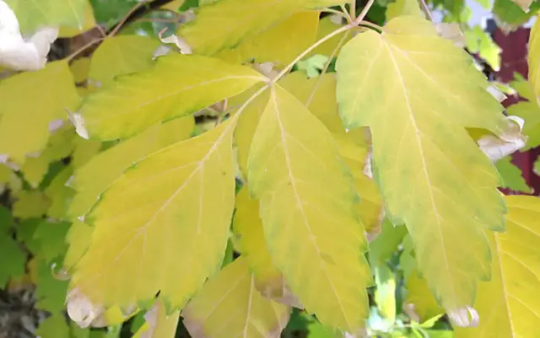
View On WordPress
0 notes
Text

Pflanze des Monats April 2023
Eschen-Ahorn
Acer negundo
0 notes
Text
The Best Ways To Effectively Landscape Your Property
Landscape design is one of the essential elements of any property. Not only does it create a welcoming environment for visitors, but it can also affect the value of your property. If you're not careful, your landscape may reflect poorly on your home and cause buyers to shy away. This blog post will explore some of the best ways to landscape your property. We'll discuss different types of landscaping, as well as tips on choosing the right plants and flowers for your home. We'll also discuss ways to ensure your landscape looks its best year-round.

What is Landscaping?
Landscaping is the process of designing and arranging plants and trees to create a pleasing landscape appearance. A well-landscaped property can add value to an estate or home, increase curb appeal, and improve air quality. There are many ways to landscape your property, and it can be as simple or complicated as you want it to be. Here are some tips for landscaping your home:
1. Begin by assessing your needs. What type of landscape do you want? Do you want a traditional garden with flower beds and pathways? Or do you want an outdoor space with drought-tolerant plants and natural elements? Once you have determined what kind of landscape you'd like, assess your space. Will the existing soil accommodate plants? Do you need to add more soil or fill in holes? Generally, a smaller area will require less plant material than a larger area, but don't forget about textures and focal points!
2. Choose plants based on location and climate considerations. When selecting plants for your landscape, consider light exposure, moisture requirements, wind resistance, disease resistance, and winterhardiness. For example, if you live in an area that experiences cold winters, choose plants that are hardy in cold climates, such as Dwarf Osage Orange (Maclura pomifera), Siberian Elm (Elmira elata), or Boxelder (Acer negundo 'Nana').
Types of Landscaping
Many different types of landscaping can be used to improve the appearance and functionality of your property. Here are four popular types of landscaping:
1. Landscape Architectural Design: A landscape architectural design is a type of landscaping that uses plants, rocks, and architectural features to create an artistic or functional landscape.
2. Natural Landscaping: Natural landscaping uses plants and trees that grow in natural environments, such as streams or woodlands.
3. Garden Design & Construction: Garden design & construction refers to creating a garden using formal or informal geometric shapes, textures, and colours.
4. Permaculture: A permaculture is a form of sustainable land management that uses nature's principles to create harmonious landscapes.
How to Plant and Care for Plants in Landscaping
Before you begin landscaping your yard or garden, consulting with a professional is essential. A landscape designer can help you choose the right plants for the area, create a plan, and provide helpful tips on how to care for them. Here are some tips on planting and caring for plants:
Choose plants that will work well in your particular climate and soil type.
Create a garden layout that makes sense and takes advantage of natural features such as slopes or existing trees.
Monitor plant growth regularly and prune back overgrown limbs when necessary.
Maintain plant beds by weeding, watering lightly, and adding organic matter.
How to Maintain a Landscape
If you want to keep your landscape looking great, you can do a few things. First and foremost, be sure to water your plants regularly. Overwatering can cause plants to rot, and overwatering can lead to DSD (drought stress disorder). Secondly, use a spreader or hand trowel to mulch around your plants. This will help retain moisture and protect the soil from erosion. Finally, fertilize your plants every few weeks with a balanced fertilizer that contains nitrogen, phosphorus, and potassium.
Conclusion
Landscaping your property can be daunting, but with the right tips and tricks, it can be easier than you think with down to earth landscaping. This article will discuss some of the best ways to landscape your property to achieve the desired results. From planting plants to designing layouts, we will cover everything you need to know to start. So don't wait any longer — start landscaping your property today!
0 notes
Text

PROBLEEMPLEKKE IN DIE TUIN
Daar is min tuine wat heeltemal sonder probleme is. In byna elke tuin is daar minstens één plek waar dit moeilik is om iets aan die groei te kry.
Miskien is dit 'n dor, rotsagtige wal; 'n klam, moerasagtige duik of 'n bakkende warm hoek; 'n klein beknopte binneplasie; 'n windgeteisterde hoekie of 'n dooie skadukol-elke tuinier ken sy eie kwellinge die beste.
Wat die probleem nog erger maak, is dat mens so geneig is om soms stroomop teen die natuur te beur en sodoende
plante in posisies te wil dwing waarin hulle heeltemal ontuis sal wees. Dit beteken net dat mens 'n ongelyke stryd teen die natuur moet voer en later opgestesp sit met plante wat 'n sukkel bestaan voer. Dit is baie verstandiger om liewer saam te werk met die natuur en slegs daardie soorte te plant wat in die bepaalde toestande sal aard.
Stap 'n mens buite in die veld rond, is dit opmerklik hoe die natuur plante groei voorsien het vir elke moontlike situasie en omstandigheid; daarom dat
Struike vir warm sanderige grond Gelukkig is daar heelparty plante, meesal afkomstig vans, place, wat selfs 'n lang tydpack des en warm gebakte sand om at phon kan verduur sonder skadelike gevolge.
Genista en Cytisus-soorte (heiembos variëteite) Dodonaea, Pittosporum variëteite, Coprosma meidorings, selonsrose en nog talle ander soorte, bv. die inheemse geel granaat (Rhigozum obovatum). Kaapse kanferfoelie (Te comaria capensis), klapperbos (Ny mania capensis), Natalse pruim (Carissa grandiflora) en Asclepias (wilde kapok) is almal tevrede met sulke ongunstige toestande.
Die probleem met kleigrond en die regte struike
U hoef ook nie moedeloos te raak met 'n stuk klei-agtige grond nie. Kleigrond
bestaan uit besonder klein en fyn gronddeeltjies met min lug tussenin. Dit stel die grond in staat om vogtigheid Jak te behou en om wortels stewig sgeanker te hou.
Die groot nadeel van kleigrond is egter dat dit tot 'n soliede massa saam bind in die somer wanneer dit droog is. Dan word die kleigrond feitlik so hard soos beton en is byna onmoontlik om te bewerk. Die toestand kan verhelp word deur baie kompos, ou mis, verrotte blare en strooi en 'n bietjie sandgrond in te werk.
Eadorings (maples") bv. Ar negundo en Acer palmatum aard goed in sulke grond, asook sommige akker bome, gouereën (Laburnums) en kersie bome. Struike 8008 Escalloniaceae, Viburnum, Berberis en Cotoneaster en meerjarige plante vuurpyle.
Gloriosa, magriete en daglelies behoort ook mooi te groei.
Is rook en roet u probleem?
Woon u miskien midde-in 'n stad waar rook en roet die lug besoedel? Probeer dan gerus die merkwaardige Ginkgo biloba. 'n Boom wat uit die oertyd behou gebly het (meer as 150 miljoen jaar, en sommige geleerdes) behoort gehari wees en dit is voorwaar met hom geval. Die eienaardige gevormde blare het aantreklike herfskleure voor die blare afval. Die boom het 'n mooi fatsoen. Plant dit in vrugbare, diep leemgrond wat goed dreineer. Nog bome vir die stad is esdoring, seder en sipres.
Wind
As wind u probleem is koue, storm agtige noordwestewind in die winter of swiepende skroeiende suidoostewind in die somer is formele of informele heinings aan te beveel of mure of skerms. Heinings beheer die wind meer doel treffend deur die wind egalig en gelei delik deur te laat.
Gebruik struike wat tot aan die grond met blare bedek is sodat daar nie trekke onderdeur die heinings is nie. Goeie heiningplante is Photinia serru late, Cotoneaster pannosus, kei-appel (Dovyalis caffra), hibiskussoorte en Ligustrum ovalifolium variegatum (,,pri vet"; kyk kleurplaat).
Soet en suur
In plaas daarvan om jou boeglam te sukkel om grond wat te soet of te suur is na jou eie sin en wil te verander, is dit tog soveel makliker en ook baie minder koste om maar liewer die plante reg te kies vir die bepaalde omstandigheid.
Besliste kalkhaters is die volgende: asaleas, hortensies, rhododendrons, ka melias, katjiepierings, proteaa, heide (Erica), magnolias, Michelia variëteite, Kalmia latifolia, Iris kaempferi, begonias byna alle soorte struike en plante wat van skaduwee en koelte hou.
Aan die ander kant word byna alle kalkliefhebbers gevind onder dié wat van sonskyn en warmte hou, bv. hibiskus, heliotroop, Diervilla (Wei gelia) Philadelphus (,,mock orange"), Genista (besembos), en fyn blomme soos grasangeliere, asters, gousblomme, vilette, ridderspore, floksies, papawers, salies, jakobregops, ranonkels, petunias en pronk-ertjies.
#dutchblr#afrikaans#poeta#dutch language#vangelo#woorden#nederland#duna#original poem#do revenge#ich liebe dich#literatura#liefde
0 notes
Text
Bedienungsanleitung iconia b1-810-12fy
BEDIENUNGSANLEITUNG ICONIA B1-810-12FY >> DOWNLOAD LINK
vk.cc/c7jKeU
BEDIENUNGSANLEITUNG ICONIA B1-810-12FY >> READ ONLINE
bit.do/fSmfG
Looking for a bedienungsanleitung iconia b1-810-12fy online? FilesLib is here to help you save time spent on searching. Our database consists of more than 6438879 files and becomes bigger every day! Just enter the keywords in the search field and find what you are looking for! Search results include file name, description, size and number of pages. You can either read bedienungsanleitung iconia b1-810-12fy online or download it to your computer. Moreover, documents can be shared on social networks. Welcome! No registration, 100% free, easy navigation through the file You can view & download any file you want without wasting your time on registration. And - what is even better - all our files are FREE to download. With one click you can find the bedienungsanleitung iconia b1-810-12fy you need. Whether you don’t want to spend your money on a service technician or your washing machine is beeping, it doesn’t matter. FilesLib will help you with your product without getting on your nerves. Search by a phrase, different files, print single pages If you don’t need to print the bedienungsanleitung iconia b1-810-12fy, you can print the specific page you need. If you are not looking for the service manual, but need installation instructions, we have several different manuals and instructions so you can choose the right one. Do you know that the $key can show you new sides and features of your product? That you can look at the specifications of two different chainsaws and decide which one to buy? And you can also find troubleshooting tips, fix your coffee maker and make your day a little bit happier. to measure depressed transpiration of maple (Acer negundo L.) and Scotch pine For trees 12 ft. high in western Ireland, throughfall will probably vary ubuy.li/en/product/4Z2702A7E-acer-aspire-5-15-6-laptop-intel- -roll-dk1202-white-300-address-labels-for-brother-ql-800-ql-810w-2-3-7-x-4
, , , , .
1 note
·
View note
Photo

Baumpflege an einem Acer negundo (Eschen-Ahorn).
0 notes
